
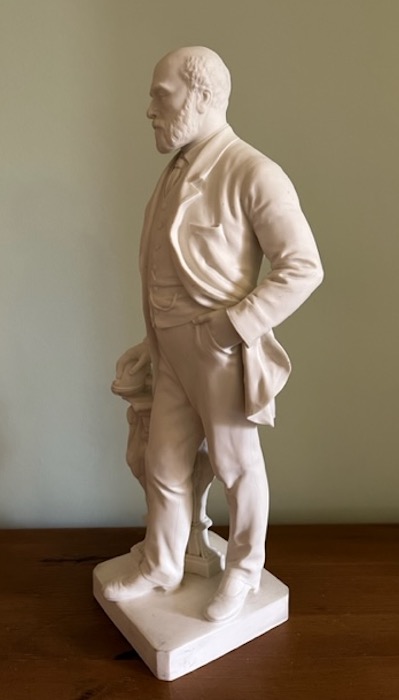
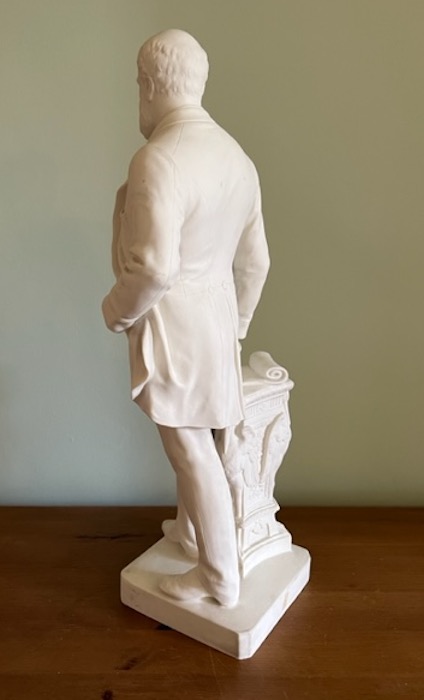
Colin Minton Campbell, after the bronze by Sir Thomas Brock, K.C.B., R.A. (1847-1922). Parian ware statuette produced by the Minton China Company (figure no. 501), modeled by T. Longmore. 27 May 1887. 48 cm. (19 inches). Private collection. Photographs by the owner. You may use these images without prior permission for any scholarly or educational purpose as long as you link your document to this URL in a web document or cite the Victorian Web in a print one. [Click on all the images to enlarge them.] — JB
Caroline Jarrett has kindly sent in an excerpt from her father John Sankey's doctoral thesis discussing the original statue as follows:
An important work not exhibited at the Royal Academy was a bronze statue of Colin Minton Campbell, who had been managing director of the Minton pottery and porcelain company at Stoke-on-Trent. When he died in 1885, a memorial committee decided that a statue should be erected in his memory and several sculptors, including Brock, Williamson, Woolner and Thornycroft, were invited to compete. The design submitted by Brock was unanimously approved by the committee in October 1885 and the statue was completed a year later (Staffordshire Sentinel, 1 January 1887).
The Duchess of Sutherland unveiled the statue on I January 1887. She and her husband, the third Duke of Sutherland (a nephew of Elizabeth, Marchioness of Westminster), lived at Trentham Hall, near Stoke and had been friends and patrons of Campbell (Jones 139). "A cheer greeted the revealing of the monument and indicated its recognition by the crowd. Her Grace seemed to be particularly struck with the faithfulness and remarked audibly that the likeness was admirable - excellent" (Jones 139).
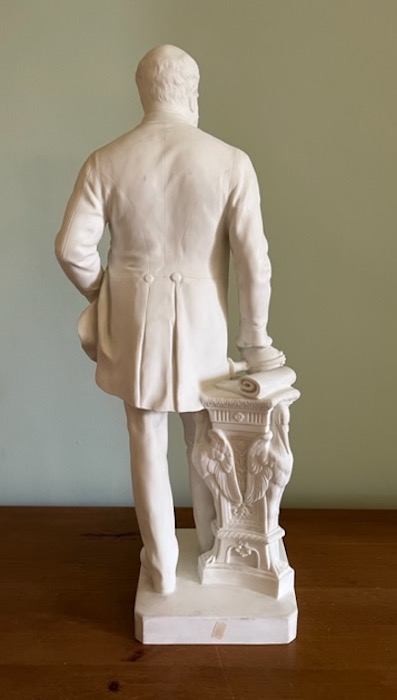
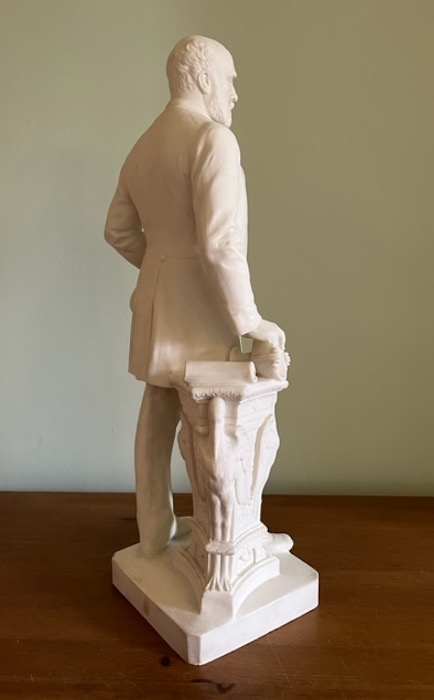
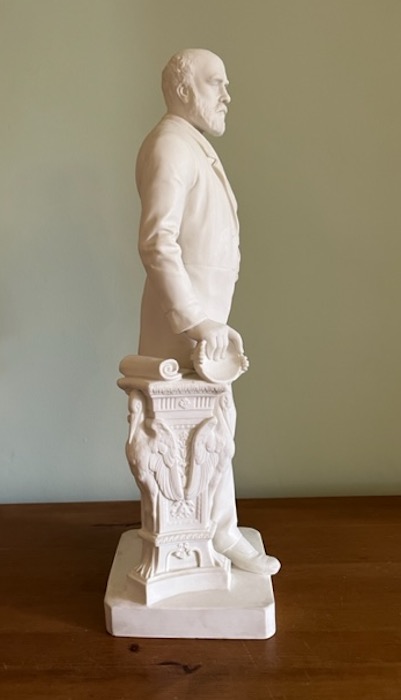
The bronze figure, 8 ft (2.4 m) tall, stands on a 9ft (2.7 m) pedestal of grey Comish granite. Campbell is bare-headed and wears everyday dress. His right rests upon a tazza which lies on its side on an enriched tripod, with storks at the angles and floral decorations on the panels, indicative of his connection with porcelain manufacture. The attitude of the figure is easy and natural, and "a characteristic pose of Mr Campbell" is reproduced by the partial insertion of the left hand in the trousers pocket (Jones 139).
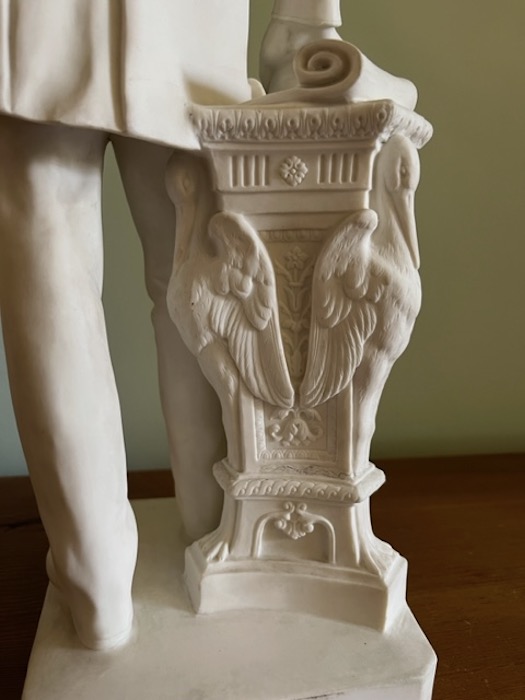
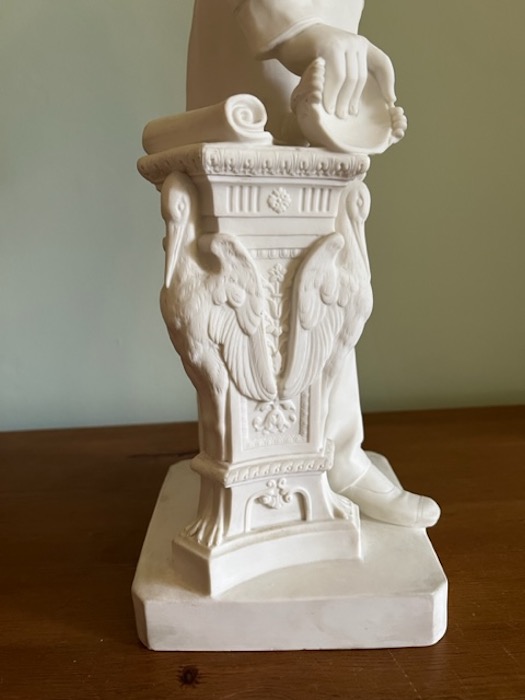
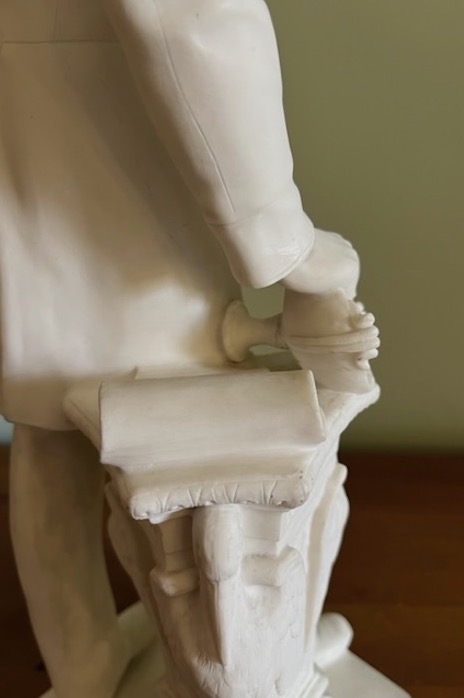
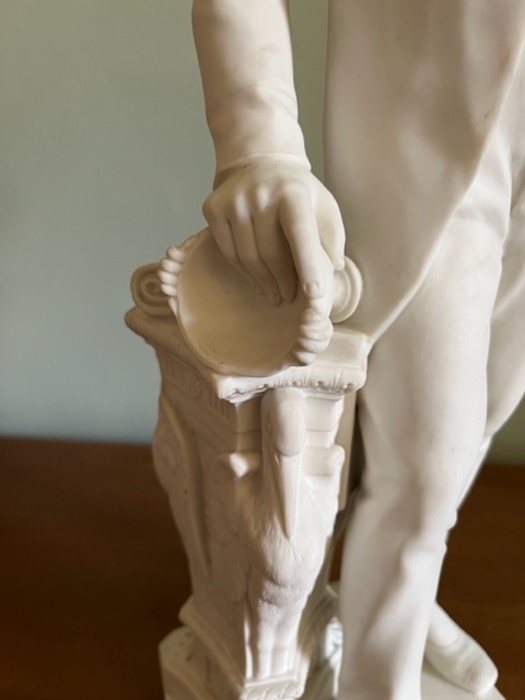
Although basically a "coat and trousers" statue, the New Sculpture influence is evident in Brock's skillful use of bronze to produce the Minton tripod and tazza and the folds of the clothing in precise detail. Benedict Read has commented:
It is possible to see in a naturalistic detail like the hand of the ostensibly humdrum public memorial statue by Brock to Colin Minton … a testimony to the similarly featured Athlete, a small echo of confirmation of Brock's more formal testimonies to his master, the portrait bust of Leighton of 1892... and the Leighton memorial in St Paul's Cathedral, London. [10]
At the luncheon which followed the ceremony, Captain Edwards-Heathcote MP proposed a toast to "The Artist." He said the cheers of the crowd, who had known Mr Campbell well, were a remarkable verdict on the artistic merits of the work. The result was the more remarkable because Mr Brock had never met Mr Campbell and had nothing but photographs to guide him. He hoped that Mr Brock might at some time immortalise other eminent citizens in the neighbourhood (laughter and applause).*
In his reply, Brock said the task of executing the statue had been peculiarly agreeable to him because in early life he was engaged in modelling porcelain, which caused him to take a keen interest in the progress of the pottery industry. It was therefore with the greatest pleasure that he received the commission to execute the memorial to one who had done so much to elevate that art in England and who by his industry, energy, great artistic taste and judgment had secured for the pottery of Stoke a worldwide reputation.
In commemoration of the event, a Parian statuette (19 in, 48 cm) was produced by the Minton China Company (figure no. 501), modeled by T. Longmore on 27 May 1887 (Jones 127-29). This was in fact one of the last Parian figures produced by the company. The popularity of Parian ware, production of which had begun in 1826. had peaked in 1851 when Minton had some 300 different models. 150 models were designed in the seventeen years to 1867, but only 50 more in the seventeen years up to 1884. Two named figures in Parian were produced after 1884 - Colin Minton Campbell (no. 501) in 1887 and the explorer Henry Stanley (no. 502) in 1890, the year when production ceased (Jones 330).
* Strangely enough, a marble bust of an unknown gentleman, signed by Brock and dated 1888, was discovered in 1998 in the cellar of the Stoke-on-Trent library, just opposite the Campbell statue.
Links to Related Material
- Minton & Co., Ceramics
- Herbert Minton (1793-1858; Colin Campbell Minton's uncle, whom he succeeded in 1858)
Bibliography
Jones, J. Minton: The First Two Hundred Years. Shrewsbury: Swan Hill Press, 1993.
Read, Benedict. "Just what was it that made Leighton's sculpture so different, so appealing?" Leighton and His Sculptural Legacy, Exhibition Catalogue. J. Barnes Fine Arts, 1996.
Staffordshire Sentinel, 1 January 1887.
Created 3 July 2023